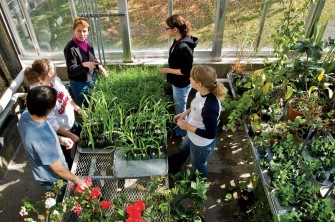
Greenhouse & Nature Preserves
Ohio Wesleyan maintains multiple “living labs.” At OWU, you’ll find the Moore Greenhouse with almost 500 specimens from around the world, a campus arboretum, and two forested nature preserves a short drive from campus.

Ohio Wesleyan prepares students for top graduate programs and successful careers in science and technology. How? You work closely with professors who are mentors. You perform hands-on research. And you may even land a summer internship or research spot at a major university, technology company, or hospital.
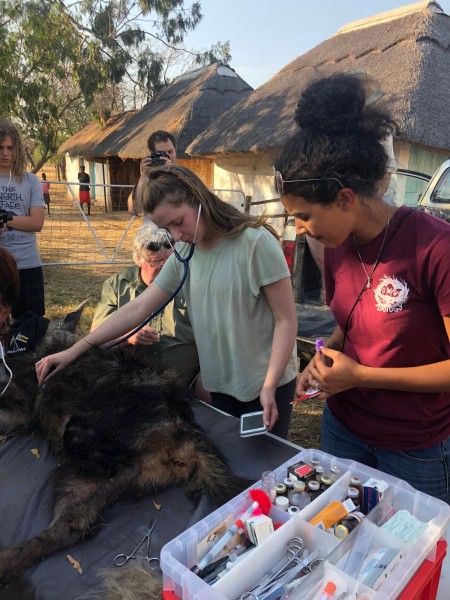 In just the past few years, our science graduates have moved on directly to Stanford, Yale, University of Pennsylvania, University of Wisconsin, Notre Dame, Ohio State, and other top universities in fields from Astrophysics to Zoology.
In just the past few years, our science graduates have moved on directly to Stanford, Yale, University of Pennsylvania, University of Wisconsin, Notre Dame, Ohio State, and other top universities in fields from Astrophysics to Zoology.
In fact, the National Science Foundation lists Ohio Wesleyan as one of the top universities in America for the number of its graduates who complete doctoral degrees in science, math, and engineering.
Today, our more recent graduates are working at organizations such as SpaceX, Facebook, Battelle, the Columbus Zoo, and Vertex Pharmaceuticals.
And new in 2021, a new $830,000 Choose Ohio First grant from the State of Ohio will fund additional scholarships for new students majoring in STEM fields.
You can complete the Choose Ohio First scholarship application here.
We think three core traits make OWU's science program one of the most successful in the country.
The OWU Connection gives you the broad-based knowledge, global skills, and real-world experience that will help you tackle tomorrow's most important challenges in science & technology.
Solving today’s biggest challenges requires the understanding and insight you develop by working closely with professors to uncover connections that link different disciplines - and exploring new knowledge through research.
Undergraduate research is a core part of The OWU Connection. Our science students develop independent projects working with faculty mentors, and in the 10-week Summer Science Research Program, students work in paid positions, carrying out research alongside faculty.
Science is an international endeavor. As a science student at OWU, you can journey to distant lands for a week or two in Travel-Learning Courses or immerse yourself in another culture with a semester abroad.
Recent Travel-Learning Courses have taken science students to Brazil, Costa Rica, East Africa, the Galapagos Islands and Ecuador, and North Carolina.
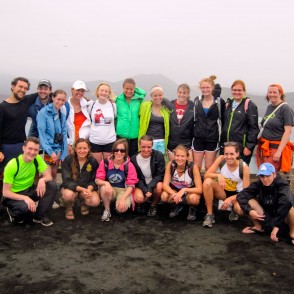
For two weeks, an Island Biology class travels to Ecuador and the Galápagos Islands with Zoology faculty to walk in the footsteps of Charles Darwin.
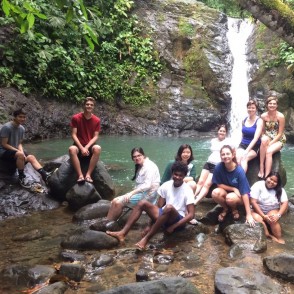
Students in Dr. Nathan Rowley's Environmental Alterations classes traveled to Costa Rica in 2018 to study sustainability, responsible tourism, and local economies.
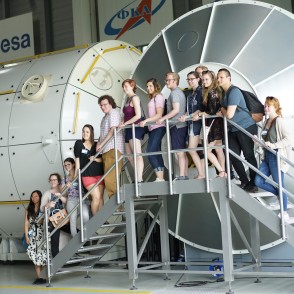
Professor Bob Harmon's Space Exploration class traveled to England and Germany, including a tour of the European Space Agency's Centre for Space Applications and Telecommunications.
Every science student has a variety of opportunities to take what you've learned in the classroom and put it to work in real-world settings. Some create unique research projects around the world, some intern at research and medical centers including the Mayo Clinic, and others receive grants to conduct research at major universities.
Science students have received University-funded Theory-to-Practice Grants for research projects from Bolivia to Japan to Vietnam.
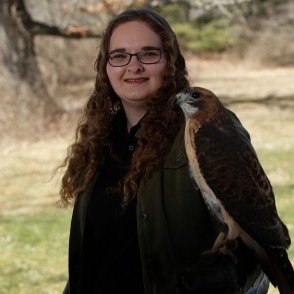
Karis Lowrie '18 had internships at the Columbus Zoo and Ohio Wildlife Center, where she worked in animal rehabilitation. She was later hired at the Wildlife Center.
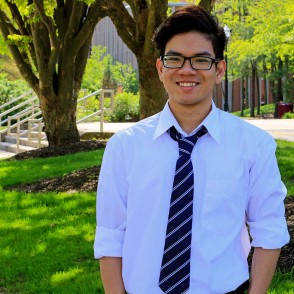
Lan Nguyen '18 completed a senior research project and two summer internships at Facebook's headquarters in Menlo Park, California. When Lan graduated, Facebook hired him as a software engineer.
OWU science faculty are outstanding scholars and researchers—and passionate teachers. They will push you, challenge you, inspire you, and work with you on your own research projects.
They can even pack a 3-minute lecture with ideas, insight, and imagination. Check out our unique i³ lectures.

Ohio Wesleyan maintains multiple “living labs.” At OWU, you’ll find the Moore Greenhouse with almost 500 specimens from around the world, a campus arboretum, and two forested nature preserves a short drive from campus.
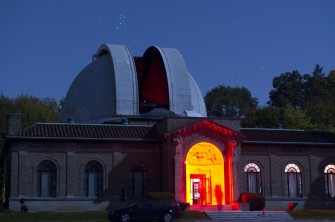
Advanced astronomical study is done at Ohio Wesleyan’s Perkins Observatory, which features a 32-inch reflecting telescope. Also on campus is the Student Observatory, with its 9-1/2-inch refracting telescope. Recently College Rank rated Perkins No. 15 out of the 35 best college observatories - the highest ranked among small-college observatories.
The Schimmel/Conrades Science Center is filled with labs and equipment not often found at small colleges. For their research, OWU students use a scanning transmission electron microscope, mass spectrometers, Linux lab, confocal and petrographic microscopes, fossil prep lab, herbarium and even a natural history museum.
Students have the opportunity to engage full-time in original research with faculty mentors, with free on-campus housing and a generous stipend for 10 weeks in the summer. Students present their findings at an all-college symposium and often also at national and international conferences.

A biochemistry major at OWU, Brad completed an OWU Connection internship at the European Molecular Biology Laboratories in Germany, conducted research with an OWU alumnus at the University of Texas, and was named a Goldwater Scholar. He is now a Ph.D. student at Stanford, where he received an NSF graduate research fellowship.
During the past 10 years, 85% of OWU graduates who've applied to medical school have been accepted. That's more than double the national average of 40%. Recent OWU graduates were admitted to medical school at Boston University, Columbia, Johns Hopkins, Michigan, Northwestern, Ohio State, University of Chicago, Yale, and many other top programs.
Recent graduates have moved from OWU to science careers at Battelle Memorial Institute, Boehringer Ingelheim, Centers for Disease Control & Prevention, Chemical Abstracts, Clean Air Council, M.D. Anderson Cancer Center, Columbus Zoo & Aquarium, Facebook, Mayo Clinic, Monsanto, SpaceX, Vertex Pharmaceuticals, and other leading corporations and organizations.
Recent science grads have been accepted at the most prestigious programs in America, including, Columbia, Cornell, Michigan, Minnesota, Northwestern, Notre Dame, University of California Davis, University of Chicago, Stanford, and Yale.
OWU has a long and rich history in producing leaders in many fields of science, including 1948 graduate F. Sherwood Rowland, Ph.D., who earned the Nobel Prize in Chemistry in 1995 for his groundbreaking work linking chlorofluorocarbons with the depletion of stratospheric ozone.
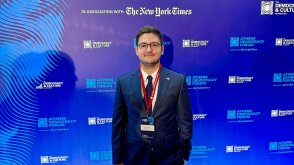
Ohio Wesleyan Senior Participates in 2024 Athens Democracy Forum in Greece
More information
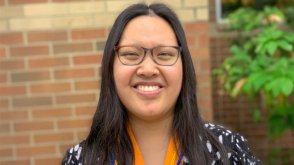
Ohio Wesleyan Junior Researches 'Artificial Intelligence for Modern Board Games'
More information
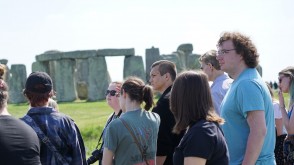
An Astronomy Travel-Learning class visits Stonehenge.
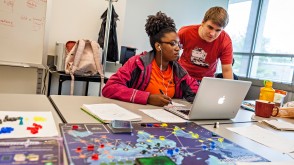
From left, Mira Jacobs (Syracuse University) and Eugene Kramskoi ’19 work to create a program that will intelligently play the board game Pandemic, a summer research project with Mathematics & Computer Science Professor Sean McCulloch.
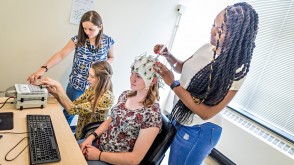
From left, Psychology Professor Kira Bailey works with Lexi Lease ’19, Mickey Rice ’19, and Malia Walker ’19 on a summer research project to study the effects of video game exposure on cognitive control.
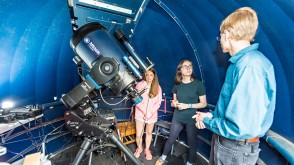
Physics & Astronomy Professor Robert Harmon (right) explains the workings of the student observatory to Amanda Jewell ’19 (center) and Brooke Kimsey-Miller (Indiana University) during a summer research project in which they collected data on starspots.

Delanie Baker ’19, a Microbiology major from Santa Paula, California, earned an American Society for Microbiology Undergraduate Research Fellowship to support summer research to study megaviruses from diverse habitats in Iceland.
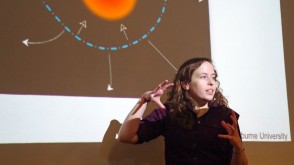
After graduating in 2008 with a degree in astrophysics and mathematics, Rachael Roettenbacher eared a Ph.D. in astronomy and astrophysics at the University of Michigan. She returned to speak at OWU about her research on starspots, which was published in the renowned scientific journal Nature.
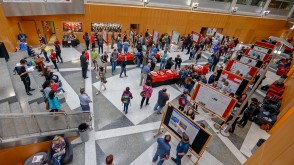
Each September, students who participated in the Summer Science Research Program display and discuss their work.